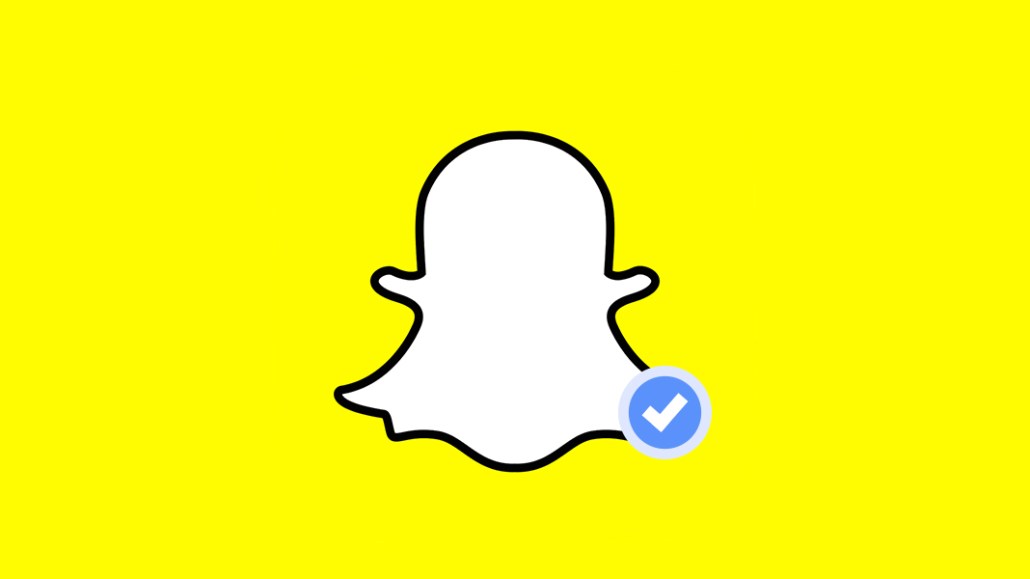Save 50% on a 3-month Digiday+ membership. Ends Dec 5.

After sponsored geofilters, Snapchat is working on launching a new self-serve platform for its Snap ads product, according to sources.
The platform is expected to roll out shortly and is expected to be timed to release alongside the IAB’s Newfronts conference, which kicks off in New York on May 1, said multiple agency executives interviewed by Digiday.
A buyer at an agency, who wished to remain anonymous, said the platform is launching a self-serve option “at least for Snap ads,” soon. Snap ads are full-screen vertical videos that brands can run on Snapchat between users’ curated stories or on the Discover section, or both.
“It has been difficult to activate Snapchat quickly and efficiently, mainly because it still lacks that self-serve advertising option outside of on-demand geofilters,” said Tom Buontempo, president at Attention, KBS’s social media arm.
From 2015 until October last year, buyers could only purchase Snap ads via a managed service, which was basically an insertion order sent to a Snapchat ads partner who would manage and execute the buy. An update in January, however, let media buyers license partner technology and manage those buys in-house. A native self-serve tool offered by Snapchat akin to the one it has for geofilters will be the next step in this evolution.
“A version of the self-serve platform already exists, but you still have to go through a third party, which charges more fees and is restrictive,” the anonymous executive said. “Snapchat’s own native tool would reduce friction since we would no longer have to go through a partner.”
Snapchat’s self-serve platform for Snap ads comes on the heels of the company launching a new self-serve platform for sponsored geofilters in late December, which allows brands and businesses to purchase long-running geofilters over their selected areas by making an annual commitment. The move also comes as advertisers and agencies are pushing back on other platforms, seeking more control and leverage. Snapchat declined to comment for this story.
These changes also come at a particularly important juncture: when the company is seeking to justify its $20 billion-plus valuation after going public. It must also continue to attract a growing roster of advertisers and advertising dollars at a time when Instagram is more aggressively than ever encroaching on its territory. The minimum spend for snap ads used to be $1,000 a day, according to one exec, but just like the self-serve platform for geofilters, the platform for Snap ads is also unlikely to have a minimum spend.
According to Jill Sherman, head of social media lead at DigitasLBi, agencies have been pushing for a self-service tool for a long time, because going through its API partners — who often come with markups — is not always ideal. Besides, many agencies are creating in-house self-serve teams of their own in order to execute buys with more agility and in real time.
“It’s a huge advantage,” she said. “It gives us better control and enables us to also understand performance better.”
Several moves that Snapchat has made recently point toward such a solution coming soon, said Amber Baumer, media manager at Blue Fountain Media. According to her, the recent news of the proprietary reporting dashboard and in-store conversion tracking now available for Snap ads shows that there are more features imminent. Plus, Snapchat also acquired San Francisco-based ad tech company Flite in December 2016, which is known for its tools to make compelling digital ads, like 360-degree video ads and vertical video ads.
For most executives, including Bold Worldwide CEO Brian Cristiano, the self-serve platform for Snap ads is the next crucial evolution of Snapchat, if it wants to be successful. According to him, Snapchat must be able to provide advertisers with the tools, data and results that parallel or exceed the rest of the industry.
Snapchat is aware that lack of metrics is a major reason why many brands are still hesitant to advertise on the platform. Its initial IPO paperwork in February indicated as much, saying that in the past, the platform relied on third-party analytics and it is cognizant that measurement errors could be a problem for the company. Snapchat will also report earnings in May.
Jeremy Sigel, global director of partnerships and emerging experiences at Essence, said that this move is in pursuit of such growth.
“This initiative isn’t just about catering to advertiser gripes; self-serve advertising solutions equal big dollars,” he said. “Managed services require resource and takes time. Self-serve scales up quickly and allows anyone to start advertising.”
More in Marketing

Future of Marketing Briefing: The tells and flops that will define Omnicom-IPG mega holdco
The real story will sit in how this newly fused entity behaves — whether it breaks from the patterns that defined both parents or simply scales them.

In Graphic Detail: CMOs at a crossroads of power and proof
CMOs are closing out another year defined by churn and shifting ground.

As Black Friday nears, fake apologies from brands are all over Instagram
Brands have taken to social media in advance of Bliack Friday to ask followers for forgiveness. The catch: They’re apologizing for their products being too good.







